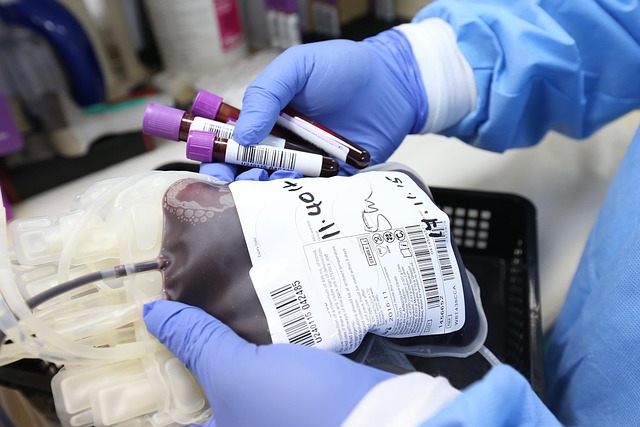Hepatitis C Uncovered: Key Symptoms, Modern Treatments, and Essential Testing
Understanding Hepatitis C: Symptoms, Treatment & Testing Options Hepatitis C is a viral infection that primarily targets the liver, potentially leading to severe liver damage if left untreated. It is a significant health concern worldwide, largely due to its persistent nature and potential to evolve into chronic liver disease.

The Silent Liver Disease: Understanding Hepatitis C
Hepatitis C earned its reputation as a “silent liver disease” because it often develops without causing noticeable symptoms for years or even decades. The hepatitis C virus (HCV) primarily spreads through contact with infected blood, with risk factors including sharing needles during drug use, receiving blood transfusions before 1992, or having tattoos from unsterilized equipment. Once in the body, the virus attacks liver cells, causing inflammation that can gradually lead to scarring (fibrosis) and eventually cirrhosis if left untreated.
Unlike hepatitis A or B, approximately 75-85% of people infected with HCV develop chronic infection. This means the virus remains in their system long-term, continuously damaging the liver. The insidious nature of this progression makes early detection particularly challenging but absolutely critical for preventing irreversible liver damage.
Detecting Hepatitis C: Essential Testing Approaches
Testing remains the only reliable way to diagnose hepatitis C, as symptoms often don’t appear until significant liver damage has occurred. Current testing protocols typically follow a two-step process:
First, healthcare providers conduct an HCV antibody test that determines if you’ve ever been exposed to the virus. If this screening test comes back positive, a second test called an HCV RNA test (or PCR test) confirms whether the virus is currently active in your body. This distinction is important because approximately 15-25% of people naturally clear the virus without treatment, resulting in a positive antibody test but no active infection.
For those at higher risk, including individuals born between 1945 and 1965, people who have injected drugs, recipients of blood transfusions before 1992, and healthcare workers exposed to blood, the CDC recommends getting tested at least once, regardless of symptoms.
Genotypes and Treatment Tailoring: Personalized Approaches
Hepatitis C exists in at least six major genetic variations or genotypes, numbered 1 through 6. In the United States, genotype 1 accounts for approximately 75% of all infections. Understanding a patient’s specific genotype is crucial because it directly influences treatment decisions.
Before treatment begins, doctors determine the viral genotype through specialized blood tests. This identification helps physicians select the most appropriate antiviral medication regimen, as certain treatments work better against specific genotypes. The good news is that newer direct-acting antivirals (DAAs) have largely overcome genotype limitations, with many approved to treat multiple or even all genotypes—a significant advance from earlier treatments that showed varied efficacy depending on the viral genotype.
Symptom Watch: Recognizing Hepatitis C Warning Signs
While hepatitis C often advances silently, some individuals do experience symptoms, particularly as the disease progresses. Early warning signs may include:
-
Persistent fatigue that isn’t relieved by rest
-
Mild to moderate abdominal pain, especially in the liver area
-
Joint pain or muscle aches
-
Unexplained weight loss
-
Nausea and decreased appetite
-
Jaundice (yellowing of skin and eyes)
As liver damage worsens, more severe symptoms may emerge, including easy bruising and bleeding, fluid accumulation in the abdomen (ascites), and confusion or drowsiness from hepatic encephalopathy. It’s important to note that experiencing these symptoms doesn’t necessarily mean you have hepatitis C, but they warrant medical attention, particularly if you have risk factors for the infection.
First-Class Antiviral Treatments: Modern HCV Therapy
Treatment for hepatitis C has undergone a revolutionary transformation in the past decade. The introduction of direct-acting antivirals (DAAs) has dramatically changed the landscape, offering cure rates exceeding 95% with fewer side effects and shorter treatment durations than previous therapies.
These medications target specific steps in the HCV life cycle, preventing the virus from replicating. Common DAA medications include:
| Medication Type | Example Medications | Typical Treatment Duration | Average Cure Rate |
|---|---|---|---|
| NS5A Inhibitors | Elbasvir, Ledipasvir, Velpatasvir | 8-12 weeks | >95% |
| Protease Inhibitors | Glecaprevir, Grazoprevir | 8-16 weeks | 94-99% |
| NS5B Polymerase Inhibitors | Sofosbuvir | 8-12 weeks | >90% |
| Combination Therapies | Sofosbuvir/Velpatasvir, Glecaprevir/Pibrentasvir | 8-12 weeks | >95% |
Prices, rates, or cost estimates mentioned in this article are based on the latest available information but may change over time. Independent research is advised before making financial decisions.
Treatment costs have historically been a significant barrier, with some regimens costing $50,000-$100,000 before insurance. However, increased competition, generic medications, and patient assistance programs have improved accessibility. Most health insurance plans, including Medicare and Medicaid, now provide coverage for hepatitis C medications, though coverage details and out-of-pocket costs vary considerably.
From Testing to Cure: The Hepatitis C Patient Journey
The journey from diagnosis to cure typically follows a structured pathway. After initial diagnosis, patients undergo additional testing to determine the extent of liver damage, often through non-invasive methods like FibroScan or blood tests that measure liver function. Doctors also evaluate other health conditions that might affect treatment decisions.
Most patients can expect:
-
8-12 weeks of once-daily oral medication
-
Minimal side effects compared to older treatments
-
Regular blood tests during treatment to monitor viral levels
-
A final test 12 weeks after completing treatment to confirm sustained virologic response (SVR), which indicates cure
After achieving SVR, patients with advanced liver disease require continued monitoring for complications, while those with minimal liver damage typically return to routine healthcare. It’s important to note that being cured of hepatitis C doesn’t provide immunity against reinfection, so ongoing risk reduction remains essential.
This article is for informational purposes only and should not be considered medical advice. Please consult a qualified healthcare professional for personalized guidance and treatment.




